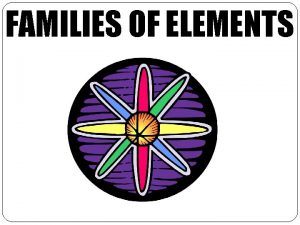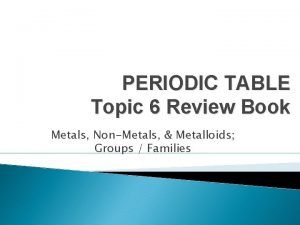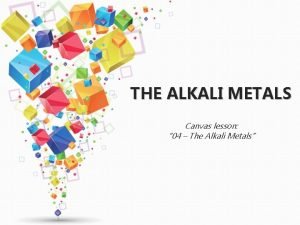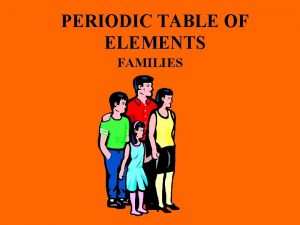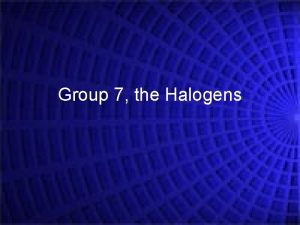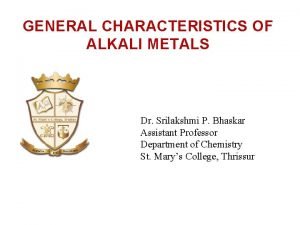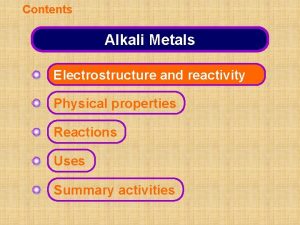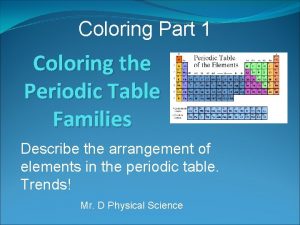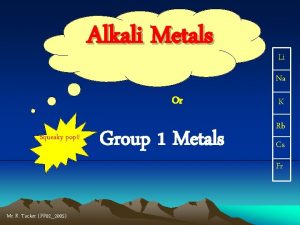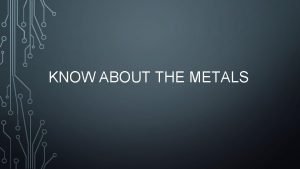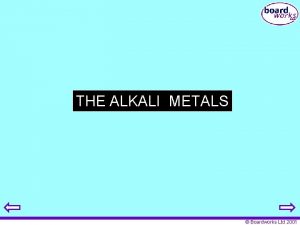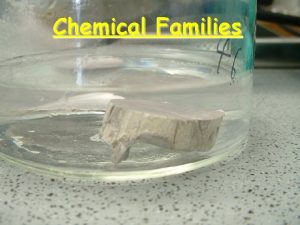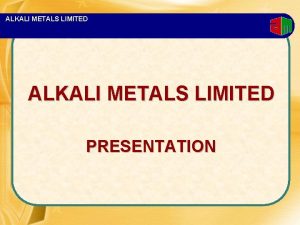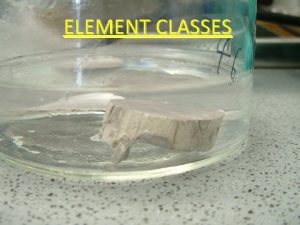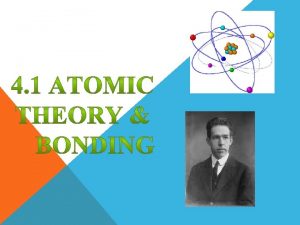Alkali Metals The alkali metals found in group








- Slides: 8

Alkali Metals The alkali metals, found in group 1 of the periodic table (formerly known as group IA), are very reactive metals that do not occur freely in nature. These metals have only one electron in their outer shell. Therefore, they are ready to lose that one electron in ionic bonding with other elements. As with all metals, the alkali metals are malleable, ductile, and are good conductors of heat and electricity. The alkali metals are softer than most other metals. Cesium and francium are the most reactive elements in this group. . The Alkali Metals are : • Lithium • Sodium • Potassium • Rubidium • Cesium • Francium

Alkali Earth Metals • The alkaline earth metals are a group of chemical elements in the periodic table with very similar properties. They are all shiny, silvery-white, somewhat reactive metals at standard temperature and pressure and readily lose their two outermost electrons to form cations with charge 2+ and an oxidation state, or oxidation number of +2. In the modern IUPAC nomenclature, the alkaline earth metals comprise the group 2 elements. • The Alkaline Earth Metals are: • Beryllium • Magnesium • Calcium • Strontium • Barium • Radium

Noble Gases • The six noble gases are found in group 18 of the periodic table. These elements were considered to be inert gases until the 1960's, because their oxidation number of 0 prevents the noble gases from forming compounds readily. All noble gases have the maximum number of electrons possible in their outer shell (2 for Helium, 8 for all others), making them stable. • The Noble Gases are: • Helium • Neon • Argon • Krypton • Xenon • Radon

Halogens The halogens are five non-metallic elements found in group 17 of the periodic table. The term "halogen" means "salt-former" and compounds containing halogens are called "salts". All halogens have 7 electrons in their outer shells, giving them an oxidation number of -1. The halogens exist, at room temperature, in all three states of matter: • Solid- Iodine, Astatine • Liquid- Bromine • Gas- Fluorine, Chlorine • The Halogens are : • Fluorine • Chlorine • Bromine • Iodine • Astatine

Non-metals • Non-metals are the elements in groups 14 -16 of the periodic table. Non-metals are not able to conduct electricity or heat very well. As opposed to metals, non-metallic elements are very brittle, and cannot be rolled into wires or pounded into sheets. The non-metals exist in two of the three states of matter at room temperature: gases (such as oxygen) and solids (such as carbon). The non-metals have no metallic luster, and do not reflect light. They have oxidation numbers of ± 4, -3, and -2. • The Non-Metal elements are: • Hydrogen • Carbon • Nitrogen • Oxygen • Phosphorus • Sulfur • Selenium

Metalloids • A metalloids is a chemical element that has properties in between those of metals and non-metals. There is no standard definition of a metalloids, nor is there complete agreement as to which elements are appropriately classified as such. Despite this lack of specificity, the term remains in use in chemistry literature. • The Metalloids are: • Boron • Silicon • Germanium • Arsenic • Antimony • Tellurium • Polonium

Transition Metals The 38 elements in groups 3 through 12 of the periodic table are called "transition metals". As with all metals, the transition elements are both ductile and malleable, and conduct electricity and heat. The interesting thing about transition metals is that their valence electrons, or the electrons they use to combine with other elements, are present in more than one shell. This is the reason why they often exhibit several common oxidation states. There are three noteworthy elements in the transition metals family. These elements are iron, cobalt, and nickel, and they are the only elements known to produce a magnetic field.

Rare Earth Element The thirty rare earth elements are composed of the lanthanide and actinide series. One element of the lanthanide series and most of the elements in the actinide series are called trans-uranium, which means synthetic or man-made. All of the rare earth metals are found in group 3 of the periodic table, and the 6 th and 7 th periods. The Rare Earth Elements are made up of two series of elements, the Lanthanide and Actinide Series.
